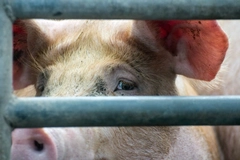
- Industry news
Industry news
- Category news
Category news
- Reports
- Key trends
- Multimedia
- Journal
- Events
- Suppliers
- Home
- Industry news
Industry news
- Category news
Category news
- Reports
- Key trends
- Multimedia
- Events
- Suppliers
DNP Licensed to Use Carbon Footprint Mark for Packaging Materials for Chilled Beverages

The Carbon Footprint (CFP) system is a mechanism that takes the greenhouse gasses (GHG) emitted throughout a product's lifecycle, calculates these gasses as CO2 and displays them.

Aug 1 2011 --- Dai Nippon Printing Co., Ltd. (DNP) is pleased to announce that is has acquired a license to use the Carbon Footprint Mark as an intermediate good (business to business product) with a plastic in-mold decoration cup offered for use with chilled beverages.
The Carbon Footprint (CFP) system is a mechanism that takes the greenhouse gasses (GHG) emitted throughout a product's lifecycle, calculates these gasses as CO2 and displays them. Under the initiative of the Ministry of Economy, Trade and Industry trial operations will be conducted through the March 31, 2012 end of fiscal year 2011, with full scale operations set to be launched in the year beginning April 1, 2012.
DNP was a pioneer in the industry and an early adopter of LifeCycle Assessments when it launched these operations in 1997, and has since been actively engaged in the development and proposal of eco-conscious products that incorporate methods to quantify the environmental burdens in the planning and design of packaging materials. The Company has built on these experiences to become an active participant in the CFP system, including being one of the first participants in the Study Group for Developing and Promoting a CFP in 2008, and promoting activities including the establishment of Product Category Rules (*2) and test schemes for various packaging, publishing and commercial printing, as well as participating in working groups from 2009.
On this occasion, a plastic in-mold decoration cup developed by the Company has been licensed to use the Carbon Footprint Mark as an intermediate good, based on the firm reputation it gained as the lightest in the industry and also as an eco-friendly product.
In 2006, DNP improved upon existing plastic in-mold label cups offered for use with chilled beverages by reducing the amount of plastic resin used by 17 percent to achieve a 14.8 gram lightweight, thin cup. But the Company did not stop there, and has continued to promote the development of molding technology and shaping, while further reducing the amount of plastic resin used, and in 2010 successfully commercialized a 9.9 gram cup, which with a 71mm gauge, and 250cc volume is the lightest produced throughout the industry.
By performing the integrated molding of a printed label with the container, it has been possible to produce a cup combining an attractive exterior with overall functionality. And by combining this with barrier film that reduces the passage of oxygen and moisture, it is possible to add such functions as those that prevent deterioration in the taste of the contents and which also prolong best-by dates. As a result, the newly developed cup has been adopted as a container mainly for milk and coffee based beverages.
It is also perhaps worth noting that the overall amount of CO2 emitted by the newly developed cup is 60.3KG per 816 unit case.










